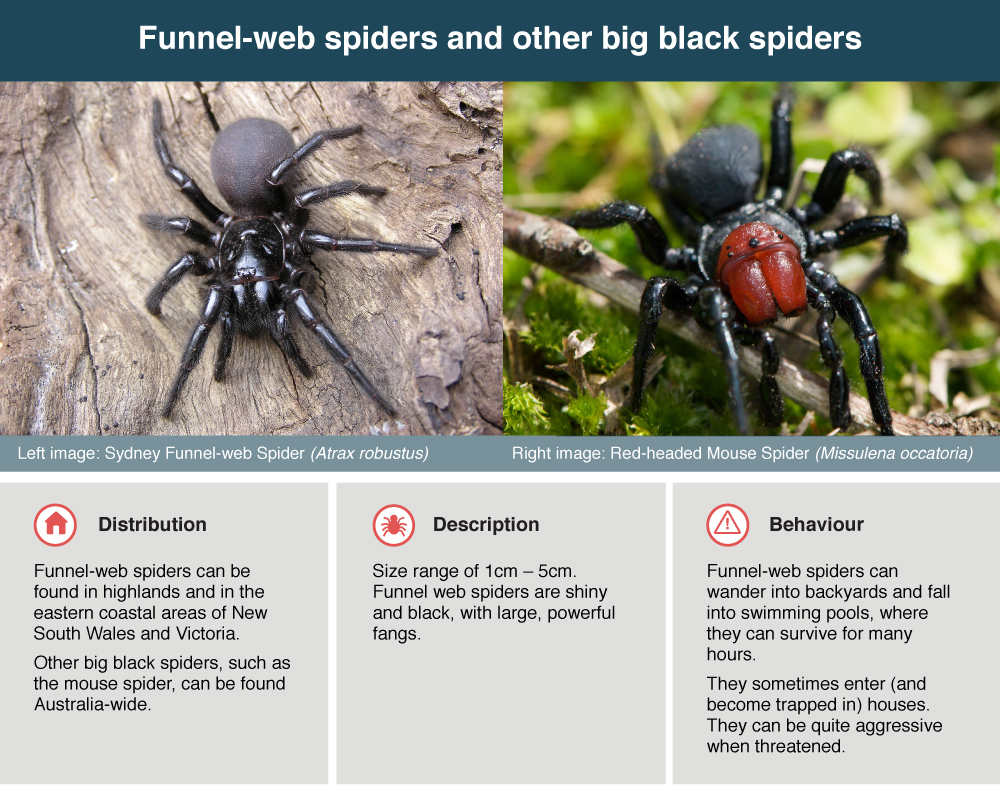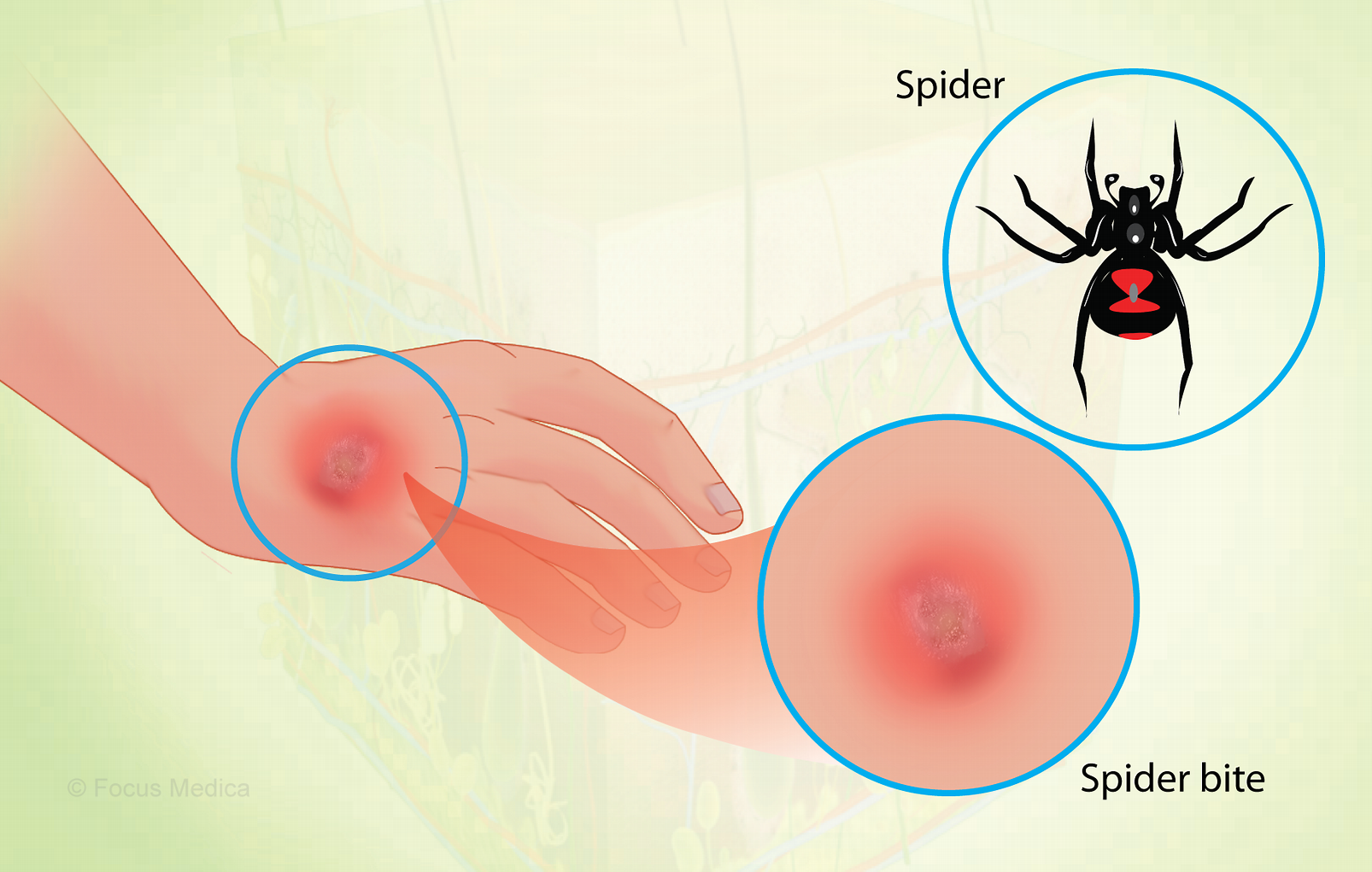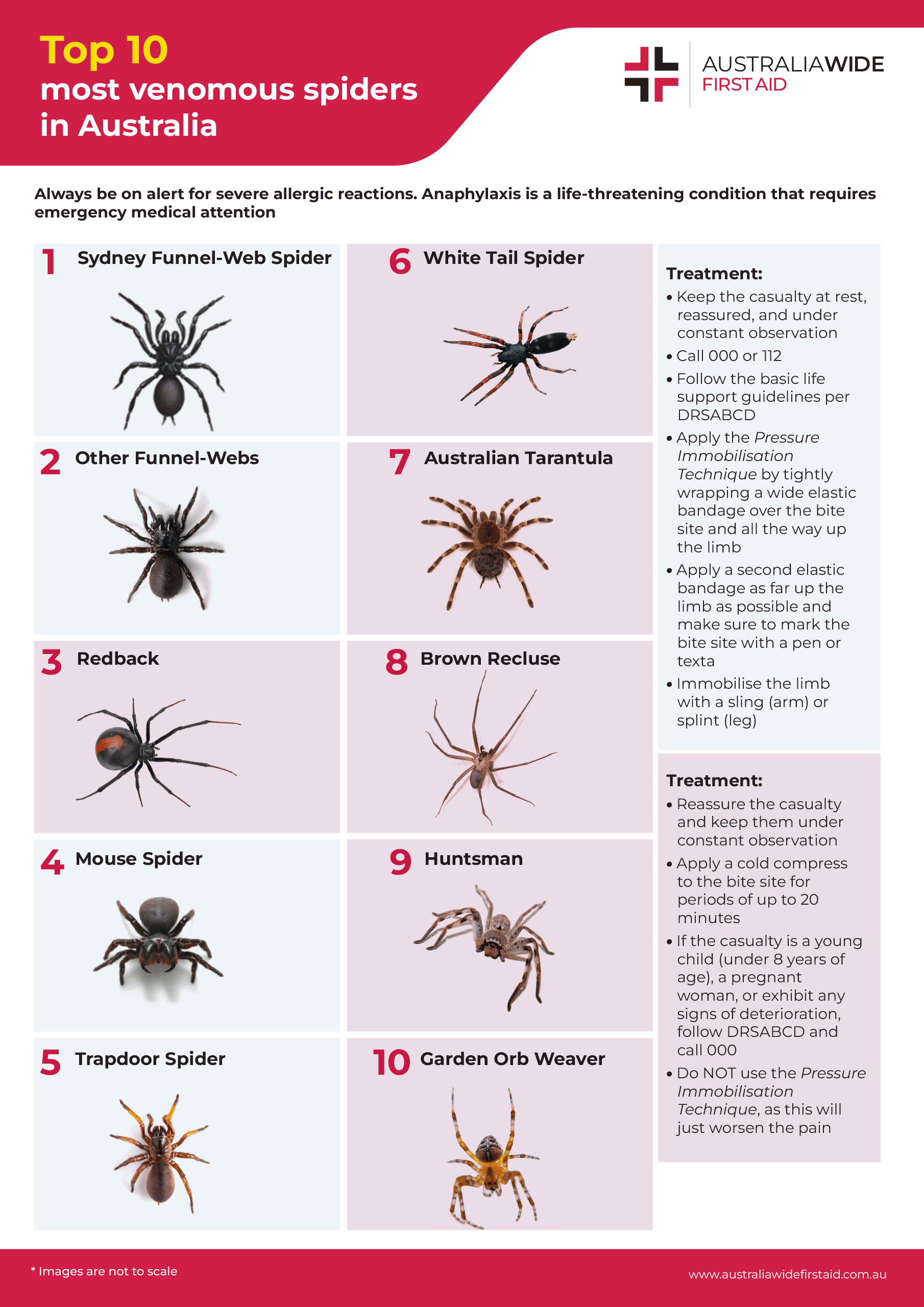
Key facts
- A funnel-web spider bite is a medical emergency, and you should call an ambulance.
- Most redback spider bites can be treated at home.
- White tail spiders aren’t considered dangerous to humans.
- In some people, spider bites can cause anaphylaxis (a severe allergic reaction).
Spider bites in Australia
It can be difficult to know if a bite from a spider is dangerous or not. This article explains the best first aid treatment needed for different spider bites.
In some people, spider bites can cause anaphylaxis (a severe allergic reaction). Learn more about first aid treatment for severe allergic reactions in the ‘anaphylaxis’ section below.
Different types of spider bite
In terms of first aid, there are 3 types of spiders in Australia:
- Funnel-web spiders and other big black spiders — bites from these spiders are very dangerous and can cause death.
- Redback spiders — their bites may cause significant pain, but they aren’t life-threatening.
- All other spiders in Australia are generally harmless.

Funnel-web spider and other big black spider bite symptoms
A funnel-web spider bite causes:
- bad pain
- lots of sweating
- nausea and vomiting (feeling and being sick)
Other symptoms that you may have include:
- drooling
- difficulty breathing
- confusion
- numbness
- tingling
- twitching of your mouth and tongue
Mouse spider bites are not common, but their symptoms are similar to a bite from a funnel-web spider.
First aid for a funnel-web spider bite
Stay calm and follow these steps:
- lie down
- mark the site of the bite on the skin with a pen or take a photo
- apply a pressure immobilisation bandage (see below)
- use a splint to keep the limb still — this slows the movement of venom around your body
- keep still
- wait for the ambulance to arrive
If someone is with you, they can try to carefully catch the spider so it can be identified. To do this:
- place an empty jar over the spider
- push a stiff piece of card under the mouth of the jar
- up-end the jar so that the spider falls to the bottom
- quickly remove the card and replace the jar’s lid
Pressure immobilisation bandage
An elasticated bandage is recommended for anyone bitten by a funnel-web spider. An elasticated bandage slows down the movement of spider venom into your blood.
Follow these steps to apply an elasticated roller bandage:
- wrap an elasticated bandage over the bite itself
- wrap a second bandage over the whole limb
The bandage should be tight — but shouldn’t cut off your circulation. You should not be able to easily slide a finger between the bandage and your skin.
When wrapping the second bandage, start just above the fingers or toes of your bitten limb and move towards your body.
Write down:
- the time of the bite
- when the bandage was put on

Redback spider bite symptoms
A redback spider bite can cause:
- pain
- redness
- sweating at the bite site
First aid for a redback spider bite
If you have been bitten by a redback spider:
- wash the bite area with soap and water
- use a cold pack for 15 minutes to relieve pain
- see your doctor if you have bad symptoms
If your pain is very bad, go to your local hospital emergency department.
First aid for other spider bites
For all other spider bites:
- apply a cold compress to the bite site for 15 minutes
- reapply as needed
You can use an ice pack wrapped in a clean cloth. This treatment will help relieve your pain.
Don’t put the ice directly on your skin as it might cause a cold burn.
The Symptom Checker guides you to the next appropriate healthcare steps, whether it’s self-care, talking to a health professional, going to a hospital or calling triple zero (000).
White tail spiders
White tail spiders aren’t considered dangerous to humans. They can cause:
- an initial burning pain
- swelling
- itchiness
Current evidence suggests that skin ulceration (necrotising arachnidism) isn’t commonly due to a white tail spider bite.
Anaphylactic shock
Some people occasionally have a severe allergic reaction (anaphylaxis) to being bitten by a spider. Anaphylactic shock is very serious and can cause death.
Symptoms of anaphylactic shock are:
- difficult or noisy breathing
- difficulty talking and/or a hoarse voice
- a swollen tongue
- persistent dizziness or collapse
- swelling or tightness in the throat
- being pale and floppy (young children)
- wheeze or persistent cough
- abdominal pain or vomiting
Cardiopulmonary resuscitation
In some cases, a person bitten by a spider may need cardiopulmonary resuscitation (CPR).
How can I prevent being bitten by a spider?
To prevent spider bites:
- leave spiders alone
- wear gloves when gardening
- relocate spiders in your home outside
- check your shoes before putting them on



